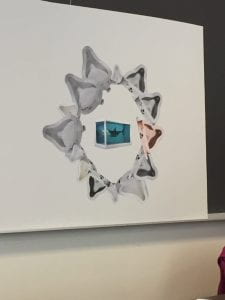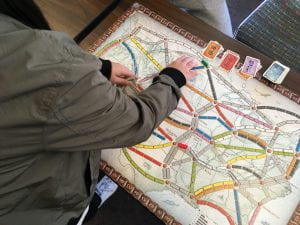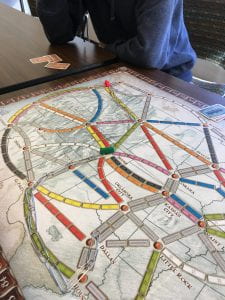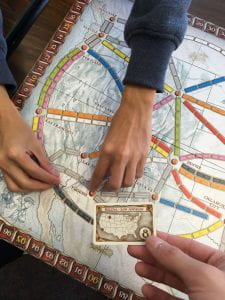
For this piece, we decided to create a stage to represent Cabaret Voltaire because performance art was a huge part of the Zurich Dada, and this was also how Dada originally started. While making this piece, we tried to recreate the chaotic and confusing vibe of the performance where people were doing things that wouldn’t make sense in a traditional theater performance. Since there were many costumes and puppets made in this period, we created strange-looking figures by cutting and reassembling them to represent the performers. As for the two-dimensional artworks, we cut them into different shapes to represent props on stage, such as the sun, the boat, and the balance ball. In the middle of the sun, we put the word “DADA” and one of the costume heads made by Sophie Taeuber to represent the theme of this performance. The texts of “DADA” we put in front of the stage are used to represent the theme as well.









